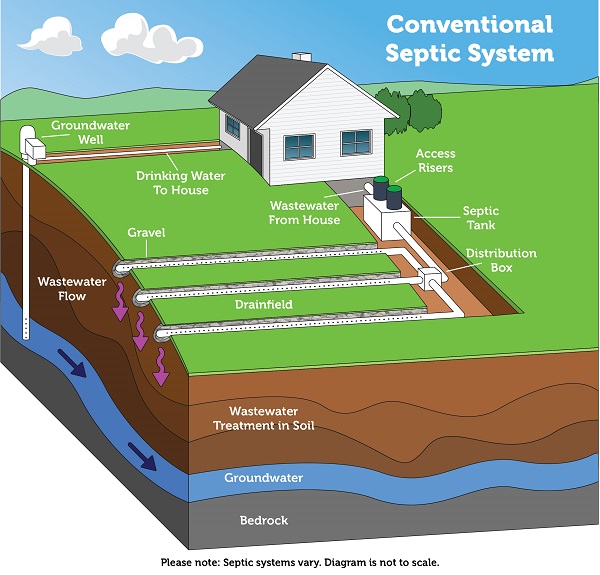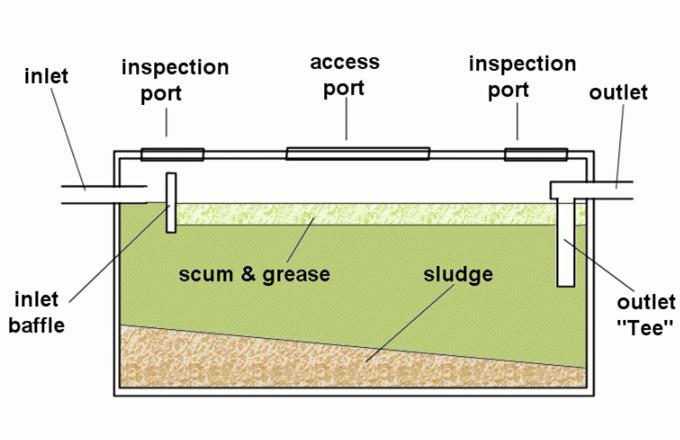Septic systems or on-site wastewater treatment systems are designed to manage wastewater from homes or properties that are not connected to a public sewer system. Approximately one in five households in the United States depend on septic systems to treat their wastewater. These systems treat wastewater from sinks, toilets, laundry, showers, etc. through natural and technological processes that typically involve solids settling in an underground tank and ending with the wastewater portion being treated in a soil drain field (also called a leach field) and sometimes a sand filter in the yard.

Wastewater flows through a pipe from the house to the inlet of the septic tank (see below). Bacteria will decompose some of the waste materials. Heavy solids settle to the bottom of the tank and form a sludge. Oils and grease will float to the top and form a scum. Wastewater between those two layers can flow through the outlet, which should have a screen or filter to block large particles. In a conventional system, the partially treated wastewater is discharged from the septic tank to a distribution box and through perforated pipes into an absorption area, also called a drain field or leach field. Here, the water is further treated by filtration through gravel and soil, chemical reactions, and decomposition by soil microorganisms before being released to the environment. In some cases a sand filter is needed to filter the effluent before it reaches the drain field. You can learn more from the U.S. Environmental Protection Agency about different types of septic systems.

Typical septic systems are designed to last 20-30 years with regular maintenance. Properly maintaining the system is important to avoid system failure and the need to spend $10,000 or more on a new system. In addition, failing septic systems can cause harmful bacteria and nutrients to enter the environment. For flood prone areas, you may wish to hire a professional to install a backflow preventer on the building sewer, so that sewage cannot backup into your home during a flood.
Nearby drinking water wells and local waterways can become contaminated by pathogenic bacteria or viruses that may cause illness to humans and animals. Excess nutrients such as nitrogen and phosphorus from failing septic systems can also cause problems. While nutrients help plants grow, too much can cause excess algae to grow in waterbodies. As algae decompose, they use up oxygen in the water causing harm to fish and other aquatic organisms. In addition, nutrients can cause cyanobacteria or harmful algal blooms to grow and release dangerous toxins to humans and animals.
Keep your septic system functioning properly to avoid:
- contaminated water
- illness to your family or pets
- expensive repairs or replacement of the system